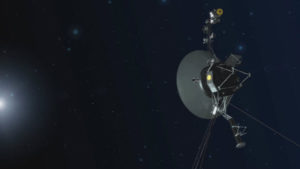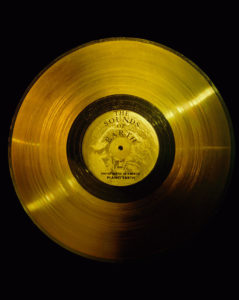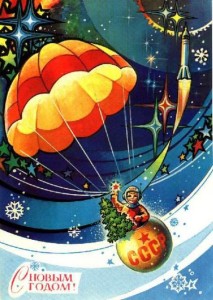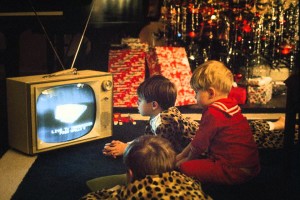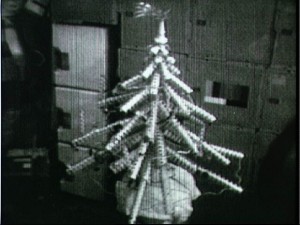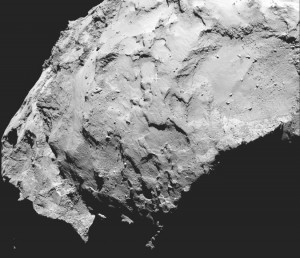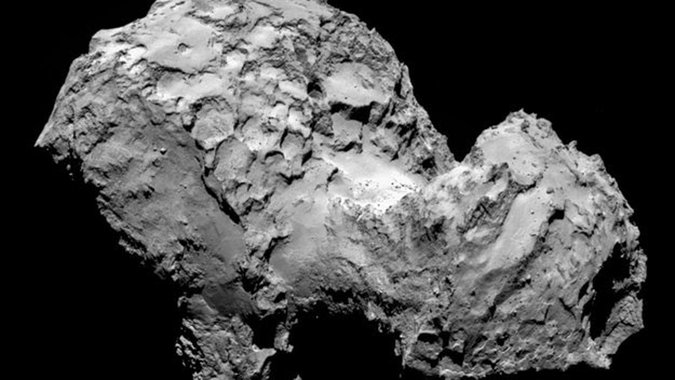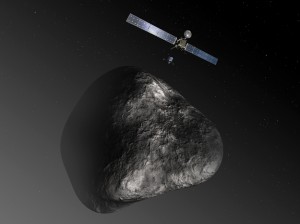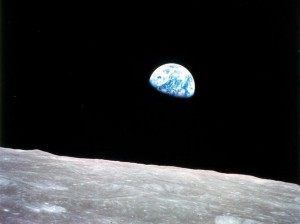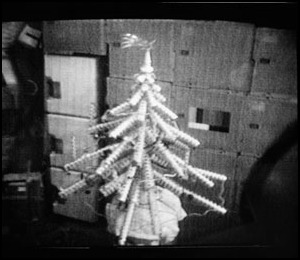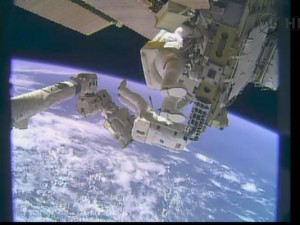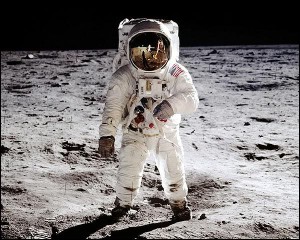With all the disheartening news coming from Washington, DC, and elsewhere, here’s one piece of happy reporting:
Voyager I spacecraft, launched in 1977 and traveling outside our solar system now, 13 billion miles from the Sun, is still sputtering along.
Last week, scientists sent out commands to fire its thrusters, idle since 1980. The signal took 20 hours to reach the spacecraft, 20 hours to return–and it worked. The thrusters fired, the thing moved. The staff cheered.
And all this using technology that’s probably less advanced than your watch, and with a team of nine ancient engineers working out of a small rental suite in Altadena, CA.
Which proves, I like to think, that the US was once capable of amazing feats of scientific endeavor and, perhaps, still is.
This is the same Voyager spacecraft, by the way, that carries the famous “Golden Record”–a gold-plated copper disc engraved with Earth images, sounds, spoken messages, and music, including Bach, Mozart, Beethoven, Stravinsky, Blind Willie Johnson, and Chuck Berry playing “Johnny B. Goode.”
(You can buy your own copy of the Golden Record, available for the first time this year in a special 3-album set, from Ozma Records.)
Below’s the full article from ArsTechnica on the firing of Voyager I’s thrusters. See also my August 4 post about the skeleton staff still operating the Voyagers, The Loyal Engineers Steering NASA’s Voyager Probes Across the Universe.
Cheers!
After 37 Years, Voyager I Has Fired Up Its Trajectory Thrusters
This week, the scientists and engineers on the Voyager team did something very special.
ARSTECHNICA
ERIC BERGER
12/1/2017, 2:45 PM
At present, the Voyager 1 spacecraft is 21 billion kilometers from Earth, or about 141 times the distance between the Earth and Sun. It has, in fact, moved beyond our Solar System into interstellar space. However, we can still communicate with Voyager across that distance.
This week, the scientists and engineers on the Voyager team did something very special. They commanded the spacecraft to fire a set of four trajectory thrusters for the first time in 37 years to determine their ability to orient the spacecraft using 10-millisecond pulses.
After sending the commands on Tuesday, it took 19 hours and 35 minutes for the signal to reach Voyager. Then, the Earth-bound spacecraft team had to wait another 19 hours and 35 minutes to see if the spacecraft responded. It did. After nearly four decades of dormancy, the Aerojet Rocketdyne manufactured thrusters fired perfectly.
“The Voyager team got more excited each time with each milestone in the thruster test. The mood was one of relief, joy, and incredulity after witnessing these well-rested thrusters pick up the baton as if no time had passed at all,” said Todd Barber, a propulsion engineer at the Jet Propulsion Laboratory in California.
In recent decades, Voyager had been relying on its primary thrusters to keep the spacecraft properly oriented so that it can maintain a communications link with Earth. But these attitude control thrusters have been degrading over time, requiring more and more energy each time they’ve been used.
By switching to the spacecraft’s “trajectory correction maneuver” thrusters, last used during the spacecraft’s encounter with Saturn in 1980, engineers say they will be able to extend the lifetime of Voyager by two or three more years before its waning power reserves expire.
